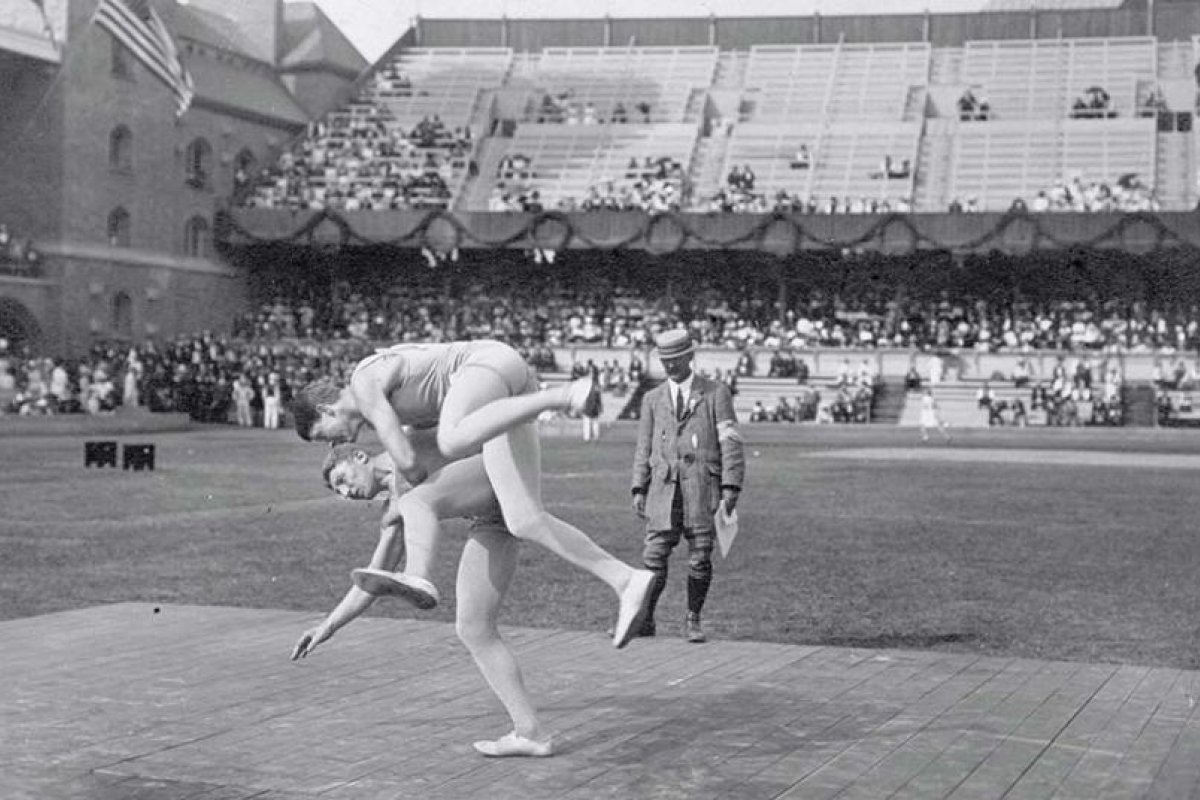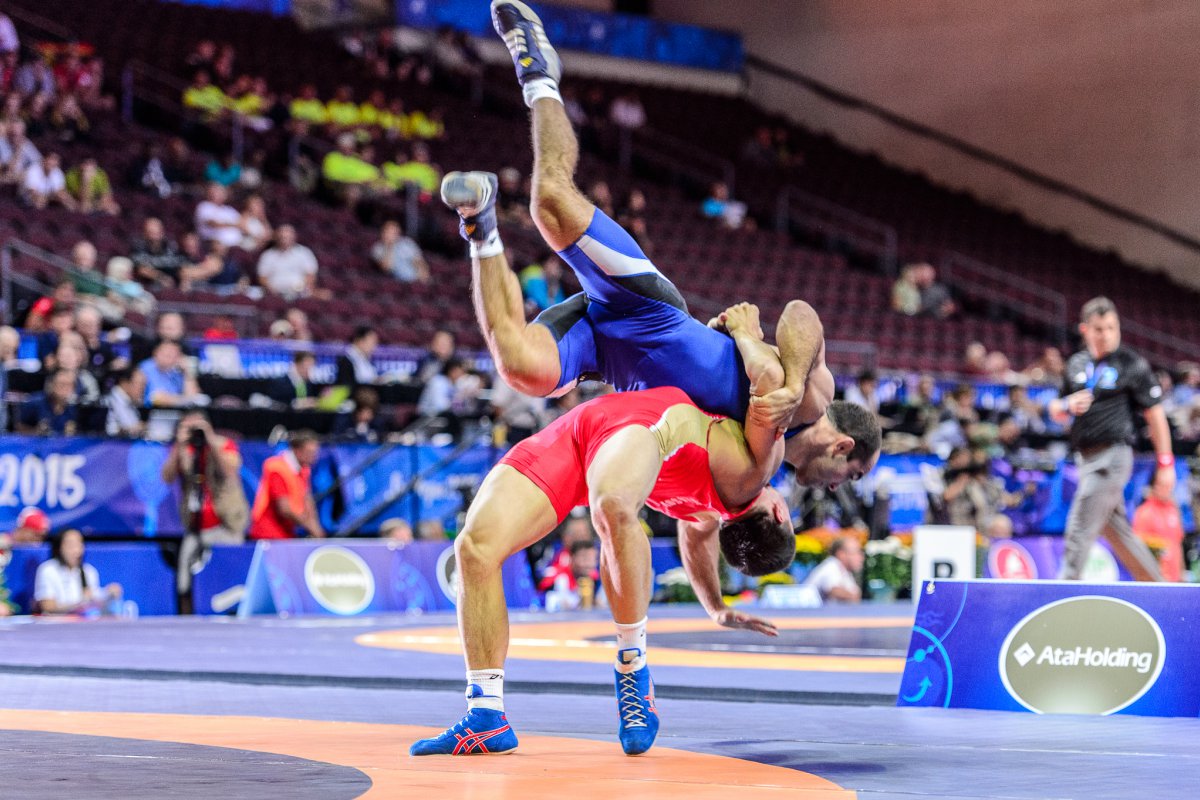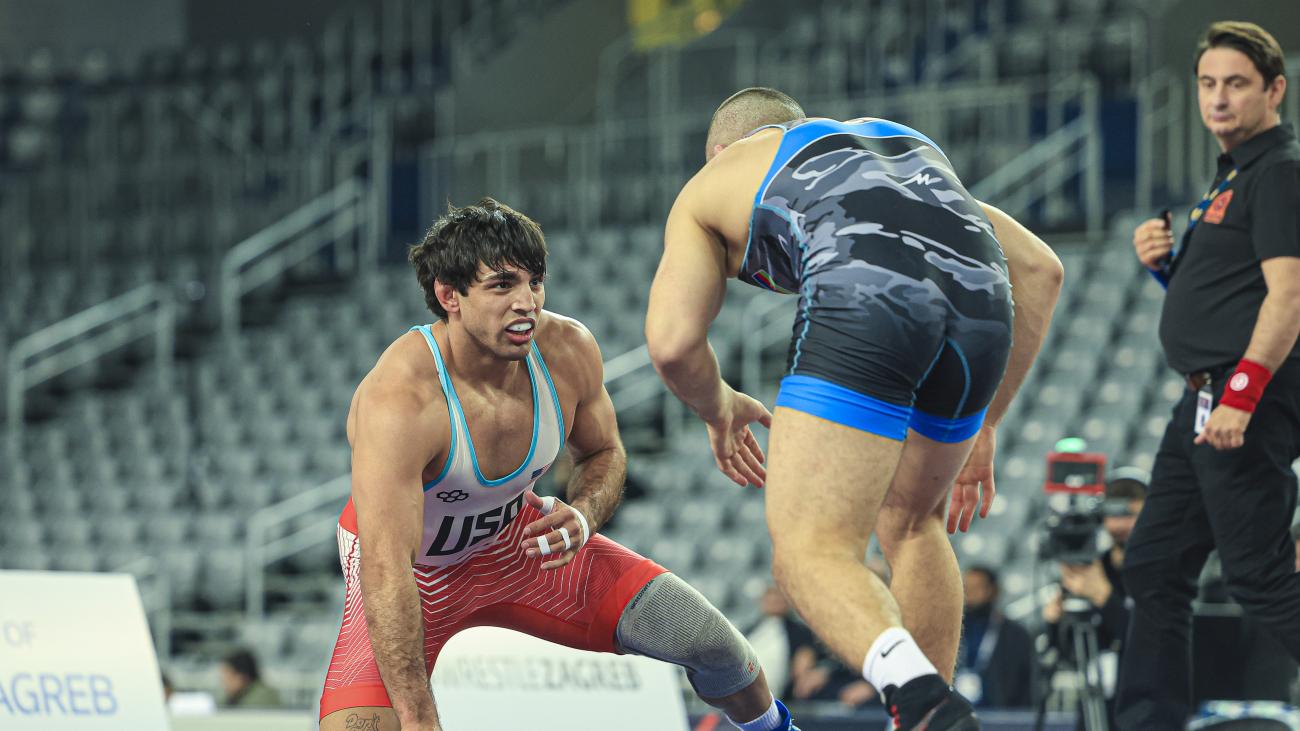RIO DE JANEIRO (August 2) – Wrestling was one of the original nine sports contested in the revival of the Olympic Games in 1896. There were no weight categories and only one style, Greco-Roman.
Despite the name, “Greco-Roman” was a style of wrestling that became popular throughout Europe in the 18th and 19th centuries, but was more commonly known as “French wrestling” or “flat-hand” wrestling.
A soldier from Napoleon’s army, Jean Exbrayat, who traveled around the European countryside to wrestle at fairs and festivals, has generally been credited with setting out some of the basic rules of his style of wrestling.
Exbrayat called his style of wrestling “flat hand” wrestling to differentiate it from other “strong man” contests popular at the fairs that allowed striking with clenched fists. Exbrayat’s rules also attempted to limit holds employed only to inflict pain and dangerous wrestling.
One rule, also attributed to Exbrayat, did not allow holds below the waist which has become the most easily recognized characteristic of modern Greco-Roman wrestling.
About this time, sports leaders urged a return to the classic “ancient values” of Greece and Rome and against this background the popular style of wrestling on the continent became “Greco-Roman” -- or the “classic style” as some countries in Europe still call it.
[[{"fid":"12144","view_mode":"wysiwyg","type":"media","attributes":{"height":800,"width":1200,"class":"media-element file-wysiwyg"},"link_text":null}]]
One interesting frivolity missed in histories of Olympic Games wrestling is that the winner of the wrestling at the 1896 Games – Carl SCHUHMANN (GER), a gymnast from Berlin – also won three other events in Athens in gymnastics.
The winners in Athens were not awarded gold medals, but, instead, received silver medals with an olive branch. The practice of awarding gold, silver and bronze medals began with the 1904 Games in St. Louis.
With his four victories, Schuhmann had more triumphs (“gold” medals) than any of the other athletes in the 43 events in Athens, making him the “Michael Phelps” of the Athens Games 120 years ago.
Michael PHELPS (USA), of course, won a record eight gold medals in swimming at Beijing 2008 and, heading into Rio 2016, has thus far won another record 18 gold medals, 2004-2012.
Wrestling was not included in the Paris 1900 Games, which were organized as a secondary feature to the World’s Fair that year, and wrestling in the St. Louis 1904 Games was contested only in freestyle and the only entrants and medal winners were from the United States.
Greco-Roman returned to the Olympic Program for good at the London 1908 Games and has been staged with freestyle from Antwerp 1920 to the present day.
The casual sports fan likely knows that Greco-Roman does not allow attacks below the opponent’s waist, grabbing or blocking the opponent’s legs to defend against or thwart the opponent’s attack.
[[{"fid":"7321","view_mode":"wysiwyg","type":"media","attributes":{"height":800,"width":1200,"class":"media-element file-wysiwyg"},"link_text":null}]]
With this limitation on what is technically or tactically possible in Greco-Roman, competitors attack the body in the standing position with bodylocks, headlocks and arm throws.
Because of the difficulty of getting locked around an opponent in the standing position, wrestlers will keep pressure on the opponent, hoping to catch him leaning the wrong way or to force a passivity call.
With the second passivity call, the active wrestler has a choice to remain standing or to put his opponent in the par terre (on the ground) position. Most wrestlers will normally choose the par terre position when given the choice.
In par terre in Greco-Roman, wrestlers look to expose the opponent’s shoulders to the mat with locks around the waist or chest and then a roll-through.
The reverse waistlock and lift – as in the iconic photo of a grimacing Alexander KARELIN (RUS) in mid-lift -- as well as head-and-arm control from the front are also popular options in par terre since lifting the opponent from par terre can also be rewarded with extra points.
Given the difficulty of scoring in Greco-Roman, a win by technical superiority – commonly referred to as a “technical fall” – is awarded when a wrestler gains an eight-point advantage over his opponent. In freestyle and women’s wrestling, the margin needed is 10 points.

Un fait intéressant que l'on rate souvent dans l'histoire des Jeux Olympiques en lutte est que le vainqueur en lutte lors des Jeux de 1896, Carl SCHUHMANN (GER), un gymnaste de Berlin, avait également remporté trois autres évènements en gymnastique à Athènes.
Les vainqueurs à Athènes ne recevaient pas de médailles d'or, mais recevaient des médailles d'argent avec une branche d'olivier. La pratique de décerner de l'or, de l'argent et du bronze a été instaurée aux Jeux de 1904 à St-Louis.
Avec ses quatre victoires, Schuhmann avait remporté plus de triomphes ("médailles d'or") que n'importe quel autre athlètes dans les 43 disciplines d'Athènes, faisant de lui le Michael Phelps des Jeux d'Athènes il y a 120 ans.
Michael Phelps (USA) a établi le record en remportant 8 médailles d'or en natation à Pékin en 2008, et a encore remporté 18 médailles d'or entre 2004 et 2012.
La lutte ne faisait pas partie du programme des Jeux de Paris en 1900, Jeux qui ont été organisés en marge de la Foire Mondiale de cette année la, et en 1904 à Saint-Louis il n'y avait que la discipline de la lutte libre au programme, ou seuls les Etats-Unis étaient inscrits.
La lutte gréco-romaine a fait son retour dans les Jeux en 1908 à Londres, et a figuré au programme aux côtés de la lutte libre dès Antwerps en 1920 jusqu'à aujourd'hui.
Il est bien connu que la lutte gréco-romaine n'autorise pas les attaques sous la taille de l'adversaire, d'attraper ou de bloquer les jambes de l'adversaire pour se défendre ou déjouer une attaque.

Ainsi, les compétiteurs attaquent le corps de leur adversaire depuis la position debout, avec des headlocks et des arm throws, ainsi que des bodylocks.
Il est difficile de bloquer un adversaire depuis la position debout ; ainsi, les lutteurs mettent sans cesse la pression à leur adversaire, et espèrent l'attaquer alors qu'il est en déséquilibre ou espèrent remporter des points pour passivité.
Lors du second avertissement pour passivité, le lutteur actif a le choix de rester debout et de mettre son adversaire dans la position par terre. La plupart des lutteurs choisissent cette seconde option lorsqu'ils ont le choix.
Dans la position par terre en lutte gréco-romaine, les lutteurs essaient d'exposer les épaules de leur adversaire au tapis avec des locks autour de la taille ou de la poitrine.
Le reverse waistlock et lift ainsi que le head-and-arm control sont des prises populaires en position de par terre, puisque le fait de soulever son adversaire depuis le sol peut également permettre à l'attaquant de remporter des points.
Il est difficile de marquer des points en lutte gréco-romaine, et ainsi une victoire par supériorité technique est accordée lorsque un des lutteurs a huit points d'avance sur son adversaire. En lutte libre en et lutte féminine, il faut dix points d'avance pour gagner par supériorité technique.





